Kidney Cancer
Proteintech offers a wide range of markers and related antibodies for kidney cancer.
There are different types of kidney cancer. Renal cell carcinoma (RCC) is the most common. RCC shows resistance to radiation or chemotherapy, thus surgery is the most promising treatment method. Renal cell carcinoma accounts for 2-3% of all cancers, with the highest incidence occurring in Western countries.
APOL1: It's new role in kidney disease |
|
| Alterations in ApolipoproteinL (ApoL1) functions lead to different lipid disorders. Several current studies show that the ApoL1 protein is involved in different kidney diseases.¹, ², ³, ⁴ | |
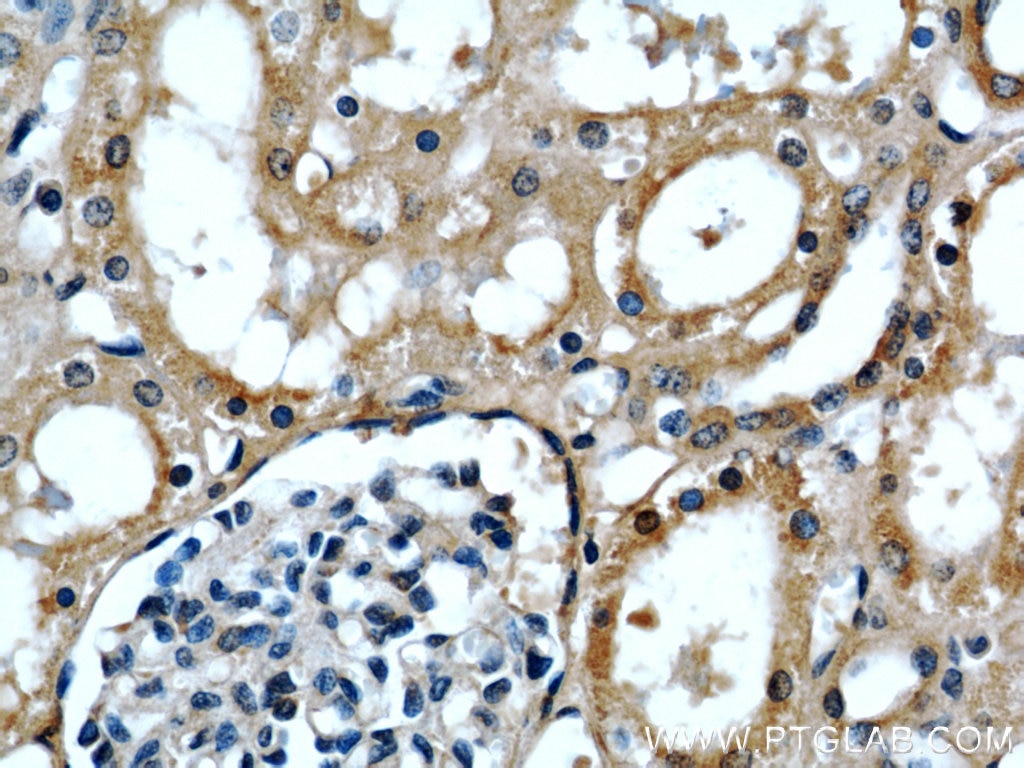 |
|
| IHC staining of paraffin-embedded human kidney tissue using APOL1 antibody (11486-2-AP) at a dilution of 1:50 (40x objective). |
Related antibodies
| Antibody name | Catalog number | Type |
| APOL1 | 66124-1-IG | Mouse Mono |
| APOL1 | 11486-2-AP | Rabbit Poly |
| APOL1 | KE00047 | ELISA Kit |
SIX2: Investigating kidney development |
|
It has previously been shown that SIX2 is expressed in developing mesenchymal tissue including renal differentiation. SIX2 also significantly marks renal progenitor cells, and is therefore a powerfool tool to distinguish between the ureteric bud (UB) and the nephrogenic “cap” mesenchyme (CM).⁵ |
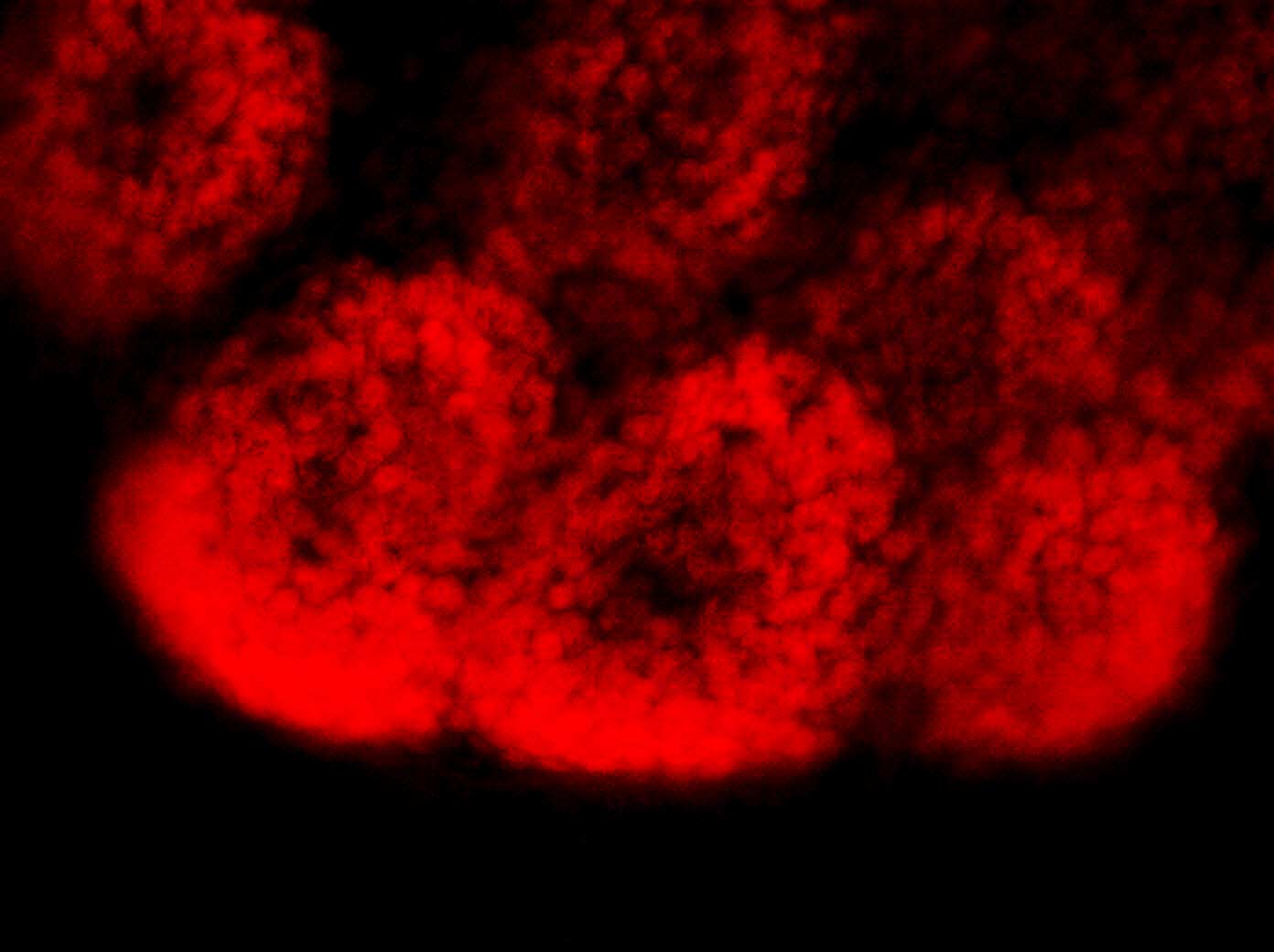 |
| Immunofluorescence staining using SIX2 antibody (11562-1-AP) of mouse embryonic kidney rudiment dissected at E13.5 and cultured for 2 days by Dr. Aleksandra Rak-Raszewska. |
| Antibody name | Catalog number | Type |
| SIX2 | 11562-1-AP | Rabbit Poly |
CA9: A marker for diagnosis, prognosis, and treatment |
| Carbonic anhydrase 9 (CA9) is a transmembrane member of the carbonic anhydrase family. CA9 is a marker specific for renal cell carcinoma. It has been shown that CA9 is not expressed in healthy renal tissue but is expressed in most clear cell renal cell carcinomas.⁶, ⁷ |
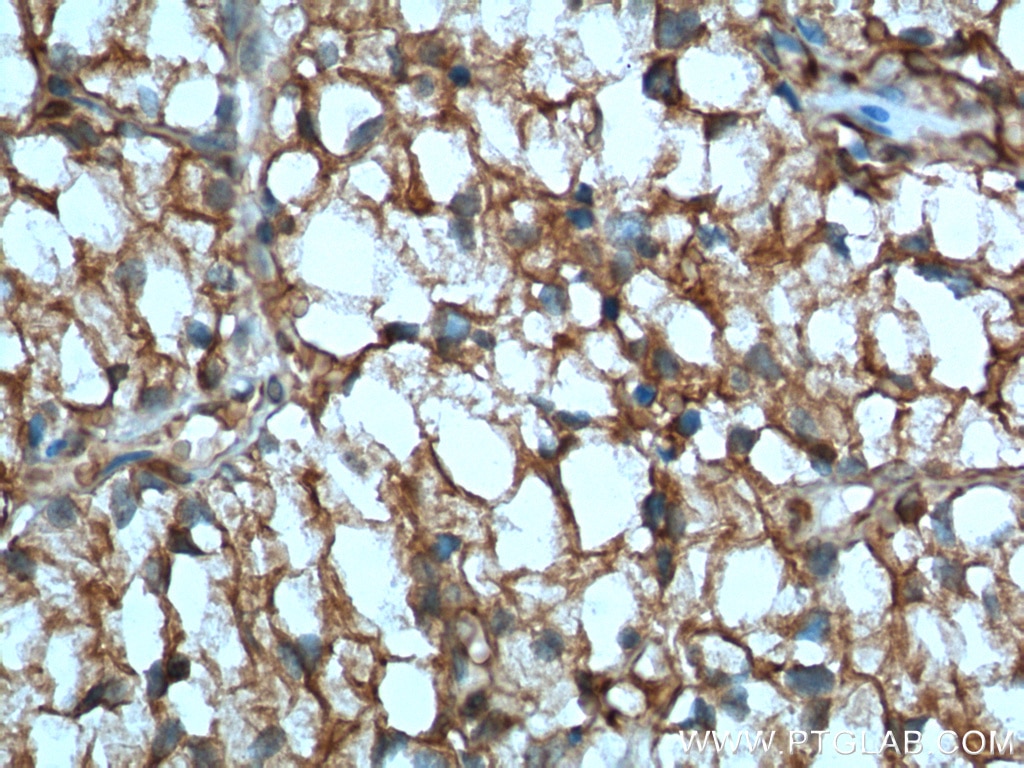 |
| Immunohistochemical staining of paraffin-embedded human renal cell carcinoma tissue using CA9 antibody (66243-1-IG) at a dilution of 1:400 (40x objective). Heat-mediated antigen retrieved with Tris-EDTA buffer (pH9). |
| Antibody name | Catalog number | Type |
| CA9 | 66243-1-IG | Mouse Mono |
Related antibodies
| Antibody name | Catalog number | Type |
| CA2 | 16961-1-AP | Rabbit poly |
| Calbindin | 14479-1-AP | Rabbit poly |
| GSTT1 | 15838-1-AP | Rabbit poly |
| NKCC2 | 18970-1-AP | Rabbit poly |
| PDK1 | 18262-1-AP | Rabbit poly |
| Renin | 14291-1-AP | Rabbit poly |
| Synaptopodin | 21064-1-AP | Rabbit poly |
| VEGF | 19003-1-AP | Rabbit poly |
References
¹ Tzur S, et al. Human Genetics, 2010; 128: 345–50.
² Behar D, et al. Am J Kidney Dis, 2006; 47: 88–94.
³ Lan X, et al. Experimental and Molecular Pathology 2015; 98: 491–501.
⁴ Hu C, et al. FEBS Lett. 2012; 586: 947–55.
⁵ Short K, et al. Developmental Cell, 2014; 29: 188–202.
⁶ Tostain J, et al. Eur J Cancer. 2010; 46: 3141–8
⁷ Soyupak B, et al. Urol Int. 2005; 74: 68–73.
Loading control antibodies
| GAPDH Antibody | 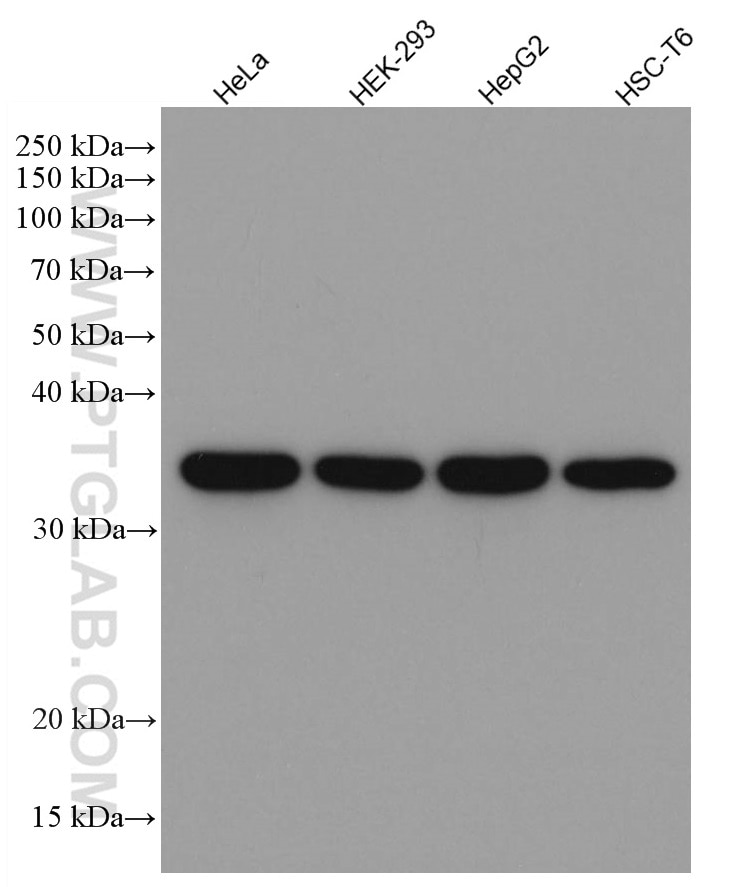 |
| Catalog no.: 60004-1-Ig | |
|
GAPDH is commonly used as a protein loading control in western blot due to its consistently high expression in most cell types. This enzyme participates in several cellular events such as glycolysis, DNA repair, and apoptosis. Proteintech monoclonal GAPDH antibodies are raised against a whole-protein antigen of human origin and have over 4,960 citations. |
| Beta Actin Antibody (KD/KO validated) | 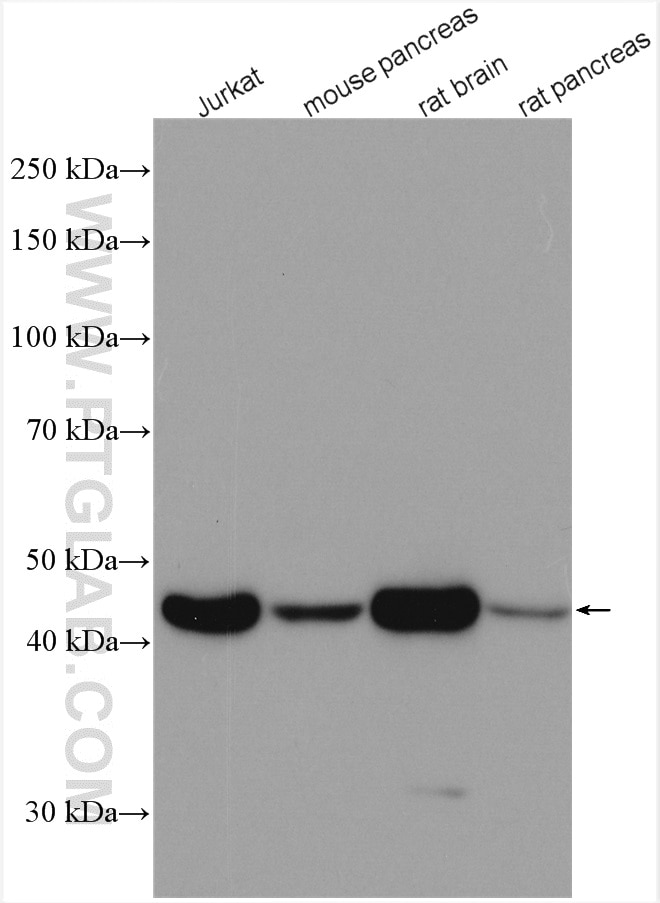 |
| Catalog no.: 66009-1-Ig | |
|
Beta-actin is usually used as a loading control due to its broad and consistent expression across all eukaryotic cell types and the fact that expression levels of this protein are not affected by most experimental treatments. 66009-1-Ig has been cited in over 2,460 publications and has wide species reactivity. |


